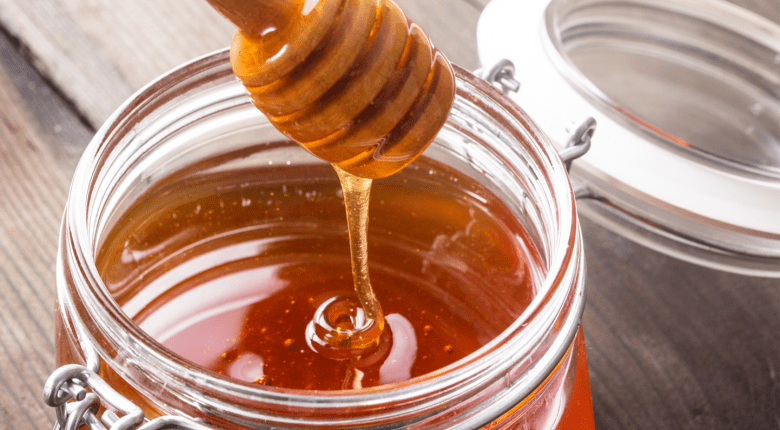According to The Vegan Society, veganism is ‘a philosophy and way of living which seeks to exclude, as far as is possible and practicable, all forms of exploitation of, and cruelty to, animals for food, clothing or any other purpose… In dietary terms, it denotes the practice of dispensing with all products derived wholly or partly from animals.’ So, beyond the brief definition, what is veganism, how does it differ from the vegetarian diet, and what does it really take to become a vegan?
A slow start for veganism
The vegan believes there is nothing of vegetarianism so long as this regrettable practice of eating more dairy produce continues. – Donald Watson, Founder of The Vegan Society
The terms ‘dairyban’, ‘vitan’, ‘benevore’, ‘sanivore’, and ‘beaumangeur’ were all touted as suggestions for the new subgroup of vegetarianism. Eventually ‘vegan’ was settled upon and The Vegan Society was founded in 1944 but it took another 5 years for the aforementioned definition of veganism to be established. Things began very slowly for the movement, beginning at the tail-end of World War II with the first publicised numbers counting their membership at just 35 in total. Signs of tangible growth for veganism began in the 1970s but it took a few decades more to really take off after years of bad press and doubts over the nutritional sustainability of the diet. The last 5 years or so has seen a dramatic change in how veganism is portrayed in the media, so much so that the vegan diet and, by extension, vegan recipes, are now on-trend with vegans and non-vegans alike.
Vegetarian or vegan?
Veganism and its cousin vegetarianism, in broad terms, are very close relations indeed and often confused – understandably so. The term ‘vegetarian’ has, at times over the history of these two movements, been intertwined with veganism. Vegetarianism officially included dairy products and eggs only once The Vegetarian Society had formed in 1847. To illustrate the confusion, nearly 40 years later the vice president of the London Vegetarian Society, stated that she was not technically vegetarian because “during the whole of that period I have used such animal produce as butter, cheese, eggs, and milk”.
Today, there are actually a few subgroups within vegetarianism including:
- Lacto-ovo vegetarians (avoid all animal flesh, but do consume dairy and egg products)
- Lacto vegetarians (avoid animal flesh and eggs, but do consume dairy products)
- Ovo vegetarians (avoid all animal products except eggs)
- Vegans (avoid all animal and animal-derived products)
- Pescatarians (don’t eat meat or poultry but do consume fish)
- Flexitarians (“part-time” veggies)
The latter two are not technically considered part of the vegetarian world and some vegans do not class themselves to be part of vegetarianism, but rather a discrete group in their own right as was originally the aim of the movement.
Is it healthy to be vegan?
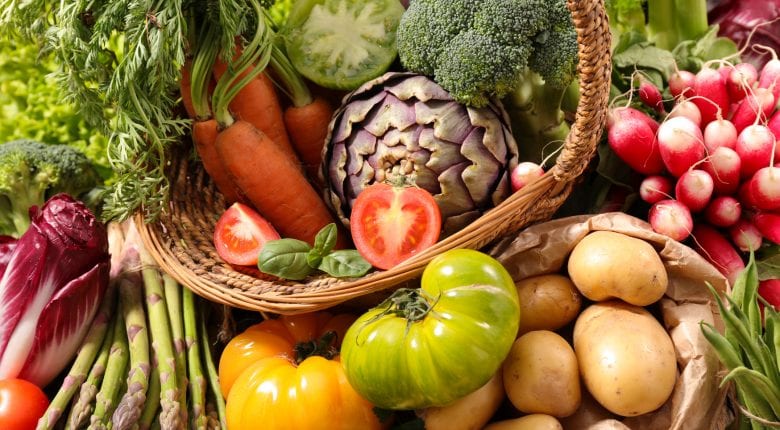
The doubts over how healthy it is to be vegan were publicised and debated in the 1950s and thereafter. Borne out of these concerns, it is now recognised that vegan disciples should ensure that they are taking in sufficient levels of vitamin B12 in particular, along with D, B6 and B2 as well as folic acid, selenium and iodine. Before starting any diet you should always consult a medical professional. A balanced vegan diet is certainly full of healthy foods including fruits, vegetables, nuts, grains, seeds, beans and pulses, as well as plant-based milks. Remember, many fruit and vegetables will stay fresher for significantly longer when stored in a Liebherr BioFresh compartment.
Do vegans eat honey?
It’s abundantly clear that vegans do not eat dairy, but what about the produce of other sentient beings like insects? Well, very shortly after The Vegan Society was founded, it was officially agreed that honey would be excluded from the vegan diet. This decision was actually reversed in 1974 and then finally reverted back to the original decision in 1988 where it has remained in place ever since.
The popular BBC TV Show QI highlighted that foods such as avocado, kiwi fruit, broccoli, cherries, cucumbers, lettuce and almonds are usually not (very strictly speaking) technically vegan as they rely on migratory beekeeping for their cultivation.
The bigger picture
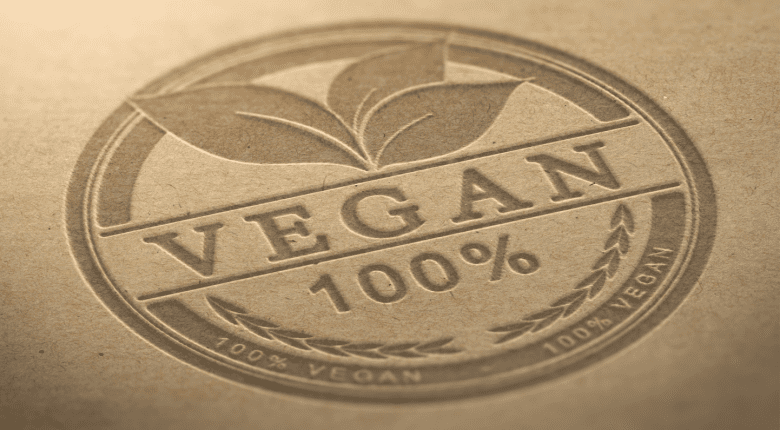
Veganism began as an offshoot from vegetarianism, but it has grown to become a lifestyle, informing choices from clothing to medicines (no animal testing) and even entertainment (zoos, aquariums and sport). Many products now have the vegan trademark so you can be certain that they are free from animal exploitation.
Vegan Society recipes
With the kind permission of The Vegan Society, here are a couple of vegan recipes for you to try during World Vegan Month (every November) and beyond.
Red Cabbage and Orange Salad with Date and Olive Cigars
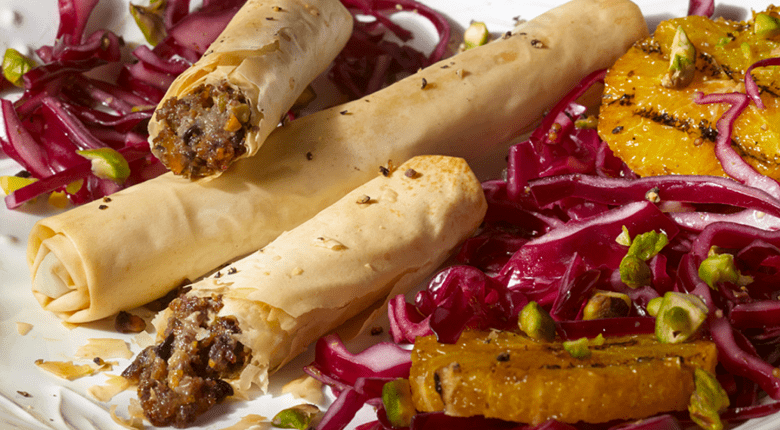
Ingredients
For the ‘cigars’ (makes 8):
- Filo pastry (4 sheets)
- Rapeseed oil
- 20 black olives, stoned
- 3 dates, stoned
- ½ tsp smoked paprika
- 50g (1 ½ oz) shelled pistachios
For the salad:
- 1 small red cabbage
- 1-2 orange(s)
- 100g (3 ½ oz) pistachio
For the salad dressing:
- 2 tsp wholegrain mustard
- 3 tsp sherry vinegar
- 3 tsp olive oil
- Salt & pepper to taste
Method
For the ‘cigars’:
- Preheat the oven to 180C/350F/Gas Mark 4. Line a baking tray with non-stick baking parchment.
- Place the filling ingredients into the bowl of a food processor and process to a paste. Divide into 8 portions.
- Take a sheet of filo pastry and lay it on a clean work surface.
- Brush sheet with oil, top with another sheet and then cut into 4 rectangles.
- Brush with oil again. Take a portion of the filling and form it into a line along a long edge of the pastry. Roll up tightly and place on prepared baking tray. Brush with oil.
- Repeat to make 8 ‘cigars’. Bake for 15-20 minutes until crisp and golden, transfer to cool.
For the salad:
- Shred the cabbage finely – allow 50g per person. Place in a large bowl.
- Mix the dressing ingredients in a small bowl, then pour onto the cabbage and mix thoroughly.
- Cut the rind and pith off the orange(s) and slice into rounds – allow one or two per person.
- Preheat a ridged griddle pan. Place the orange slices on the hot pan and allow to sit until caramelised in stripes.
- Chop the pistachios roughly.
- Assemble the dish by piling the cabbage onto each plate, sprinkling with chopped pistachios, and adding a slice of orange, a ‘cigar’ or two and a grind of black pepper.
Vegan Brownies
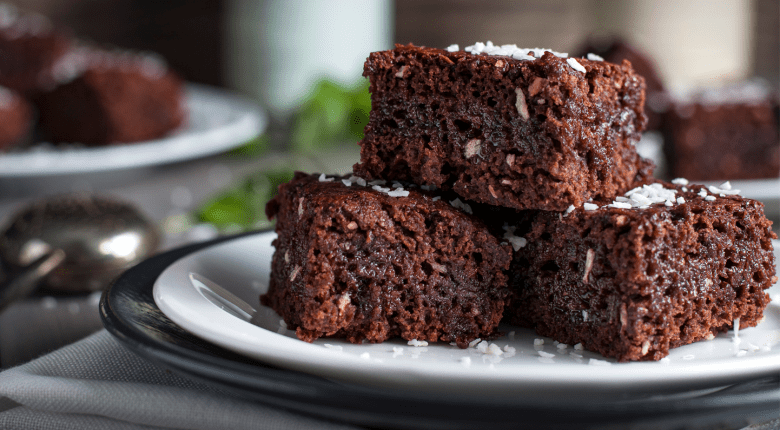
Ingredients
- 110g (3.9 oz) plain flour
- 20g (0.7oz / 1⁄4 cup) cocoa powder
- ¾ tsp baking powder
- 10g (0.3 oz / 2 tbsp) desiccated coconut
- 80g (6.3 oz / 1 cup) brown sugar
- 50g (1.7 oz / 2 tbsp) golden syrup
- 120g (4.2 oz / 1/2 cup) soy milk
- 15 drops vanilla extract
Method
- To begin with, preheat the oven to 180°C (360°F).
- Sift the flour, the cocoa powder, and the baking powder into a bowl.
- Add the coconut, the sugar, the syrup, the milk and the vanilla into the bowl, and whisk the ingredients to combine them, and complete the batter.
- Pour the batter into a greased 20 centimetres (8 inches) round pan, and bake the brownies for 20 minutes in the preheated oven, remembering to rotate the pan halfway through the cooking time.
- Before removing the brownies from the oven, pierce them with a toothpick to ensure that they are cooked. If they are, the pick will come out dry and with no mixture on it.
Brownie Recipe originally taken from The Best of The Corner – Proven to Be Good (e-book) by The Vegan Corner
For more recipes from The Vegan Society and more information on veganism please visit their website. If you enjoyed this article please share it Facebook and Twitter… If you have any vegan recipes you would like to share, please get in touch, we’d love to hear from you!
